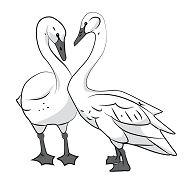It is still late March – almost April – and we are still caught in the throes of winter here. I am chomping at the bit to break free from confining walls and stuffy, indoor air. My thoughts turn automatically to the garden. I strain my ears to hear the birds as they busy themselves with building nests, to bring forth their young. I dream of beautiful flowers and the insects that help to pollinate them. I long for the soothing sounds of bumblebees, which technically should not be able to fly, yet glide gracefully from flower to flower. I want to smell the petrichor rising up from the soil and feel my fingers plunging into fertile earth that has been warmed by the sun.
Our planet is running out of potable water. Our aquifers are drying up and parts of the world are experiencing drought. Gardeners understand the importance of water for growing healthy produce and beautiful flowers. The use of rain barrels, to capture rainwater during heavy rains, has long been in use; but the problem is that once the barrels are filled, no more water can be saved. Rainwater harvesting takes the idea of saving water into the garden itself. By connecting hoses to roof downspouts so that they can flow into rain barrels, and from there into soaker hoses, water is distributed slowly and spread out to where it is needed. Directing water flow through the use of berms, swales, and rain gardens, will also help to replenish underground reservoirs to preserve precious water. I am certain that every property, building, and home can be structured in a way to prevent water from being lost forever in storm drains and sewers. By keeping the water that Nature provides us, where it is needed, we eliminate the wasteful practice of overhead watering and the costly installation and maintenance of sprinkling systems.
In Question Everything, I talked about the importance of protecting our water, our air, our soil, and our sunlight – those things that are essential to life itself. It is high time that we stop taking these things for granted. Quite simply, our planet is drying up. We can begin now, to conserve. We can replace lawns with drought tolerant ground covers and native plants. We can grow food. We can plant trees to help anchor the soil, preventing erosion and the loss of topsoil in the drying winds. We can harvest the rain dripping off of our roofs. We can each do our part to care for our planet.
29 MARCH 2023 RAINWATER HARVESTING
This entry was posted in MARCH 2023. Bookmark the permalink.



